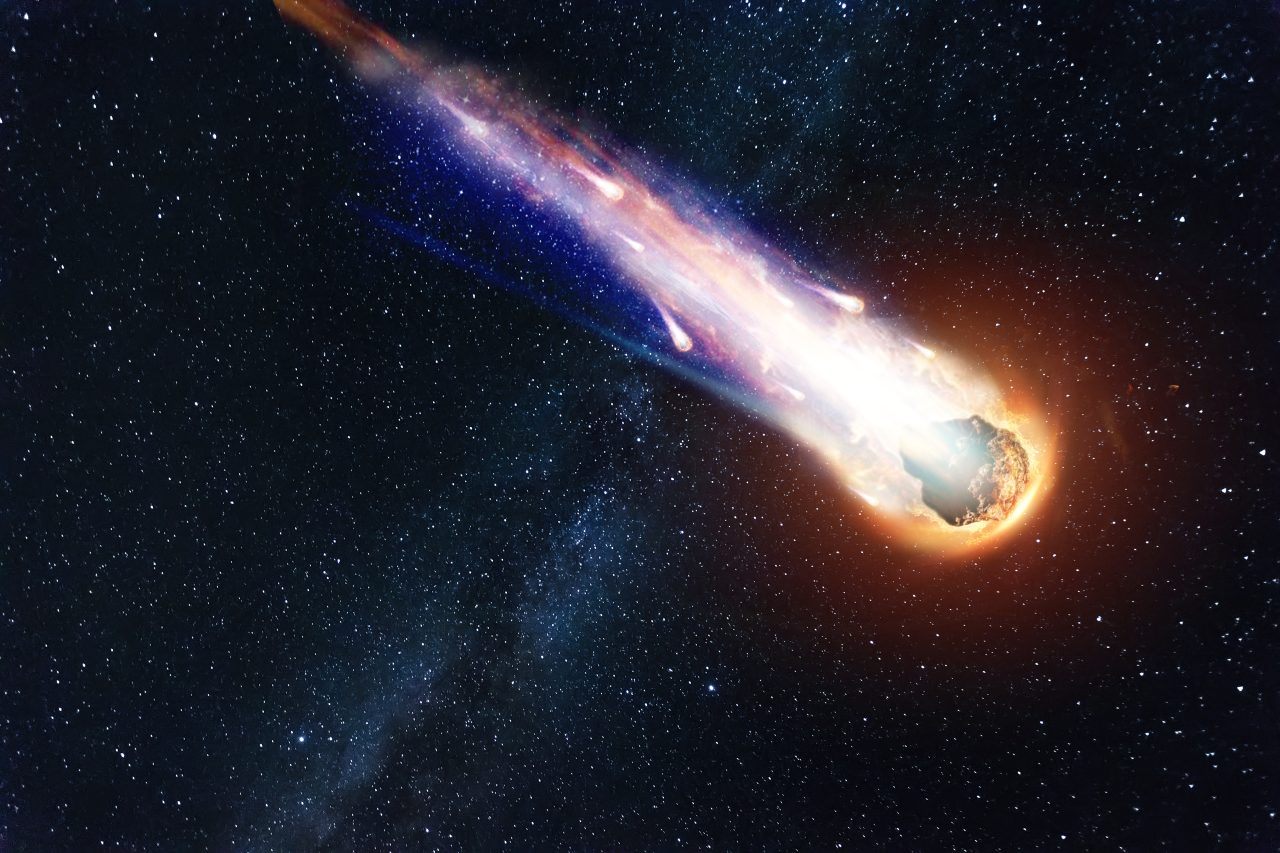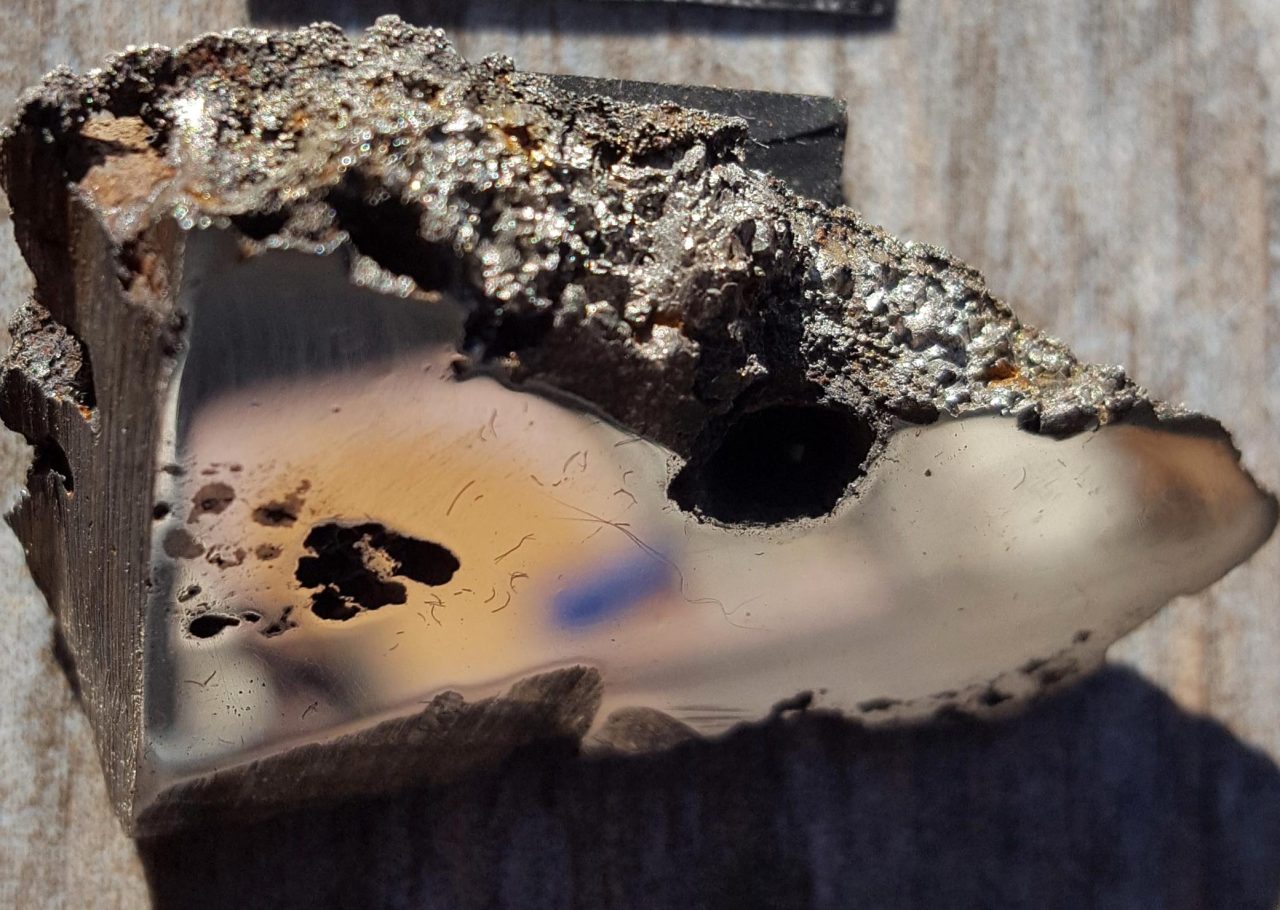
I. Introduction
Background
Meteors, comets and asteroids are astronomical objects that can collide with Earth. These objects can range in size from a few centimeters to kilometers. Meteorites originate from the asteroid belt, comets originate from the scattered disk or Oort cloud, and ash asteroids originate from decayed asteroids and comets.
Potential threat
Near-Earth objects (NEOs) could cause serious damage to Earth if they collide with our planet. The extent of damage will depend on the size of the object, the speed of impact and its angle of approach.
Potential impact scenarios
Potential impact scenarios for NEOs include:
Small impacts: Small objects can burn up in Earth’s atmosphere, causing bursts of light and echoes.
Large impact: Larger objects can penetrate the atmosphere and collide with the Earth’s surface. These collisions can create impact craters, causing tsunamis, earthquakes and other disasters.
Event scale
The scale of a NEO collision can be assessed by its collision energy. The collision energy is calculated using the formula:
E = 1/2 * m * v^2
In there:
E is the collision energy (unit J)
m is the mass of the NEOs object (unit kg)
v is the impact velocity of the NEOs object (unit m/s)
Frequency of occurrence
The frequency of NEO collisions depends on the size of the object. Small objects have a higher occurrence frequency, while large objects have a lower occurrence frequency.
Key terms
Meteor: Small astronomical object, originating from the asteroid belt or comets.
Comet: An astronomical object with a core of ice, dust, and gas.
Asteroid: Small astronomical object, originating from the asteroid belt.
Impact velocity: The speed of the NEO object when it collides with Earth.
Collision energy: Energy released when NEOs collide with Earth.
Important orbital parameters of NEOs
Important orbital parameters of NEOs include:
Minimum approach distance (MOID): The closest distance that NEOs can reach Earth.
Orbital plane: The plane in space in which NEOs move.
Perigee: The closest point to Earth in the orbit of NEOs.
Apogee: The farthest point from Earth in the orbit of a NEO object.
Orbital velocity: The speed of the NEO object as it moves in its orbit.
Methods to stop meteorites are being researched
Currently, there are many methods of preventing meteorites being researched, including:
Use of missiles: Rockets are used to crash into NEOs, causing an explosion and destroying the object.
Using a laser system: A laser system is used to heat or vaporize a part of the NEOs object, thereby changing the object’s orbit.
Use of kinetic technology techniques: Kinetic technology techniques are used to apply force to the NEOs, thereby changing the object’s trajectory.
These methods are being researched and developed to improve efficiency and applicability.
II. Method of using interceptor missiles

1. Stand-off explosion technique
The near explosive technique is a method of stopping meteorites by using a rocket to hit the meteorite at a certain distance. The rocket’s explosion will create a thrust, changing the orbit of the meteorite.
Proximity blast techniques can be divided into two main categories:
Contact explosion: The rocket crashes directly into the meteorite.
Long-distance explosion: The rocket hits the meteorite at a certain distance.
In this case, we will consider the technique of blasting at a distance.
2. Analyze the required thrust
The thrust required to deflect a meteor depends on several factors, including:
Mass of the meteorite: The greater the mass, the more force required to deflect it.
Speed of meteorite: The greater the speed, the more thrust is needed to deflect it.
Distance between rocket and meteorite: The greater the distance, the less thrust is needed to deflect it.
The formula for calculating the thrust required to deflect a meteor is:
F = m * v * Δv
In there:
F is the required thrust (unit N)
m is the mass of the meteorite (unit kg)
v is the speed of the meteorite (unit m/s)
Δv is the change in speed of the meteorite (unit m/s)
For example, to deflect an asteroid with a mass of 100 million tons and a speed of 20 km/s to an angle of 1 degree, a thrust of about 100 million tons-meters/second (100 Gtm/s) is required.
3. Warhead size
The size of the rocket’s warhead needs to be large enough to create the necessary thrust to deflect the meteorite. Warhead size depends on several factors, including:
Type of fuel used: The higher the density of the fuel, the less fuel is needed to produce a given thrust.
Guidance technology: The more precise the guidance technology is, the less fuel is needed to get the missile to the right location.
4. Navigation accuracy
The missile’s guidance accuracy needs to be high enough to get the missile to the right position for detonation. Navigation accuracy depends on a number of factors, including:
Navigation technology used: The more modern the navigation technology, the higher the accuracy.
Information is used for navigation: The more precise the information, the higher the accuracy.
5. Evaluate the effectiveness of the method
The effectiveness of the method of using interceptor missiles depends on a number of factors, including:
Size of the meteorite: The larger the meteorite, the more difficult it is to deflect.
Orbital parameters of meteorites: The closer a meteorite orbits to Earth, the more difficult it is to deflect.
6. Ability to practically deploy
The practical implementation of the interceptor missile approach depends on a number of factors, including:
Technique: Technique needs to be developed and perfected to ensure efficiency and safety.
Cost: Cost needs to be minimized to make the method viable.
Time: Time needs to be shortened so that the method can be implemented promptly.
Conclude
The method of using interceptor missiles is a potential method to stop meteorites. This method can be used to stop small and medium sized meteorites. However, this method still has some limitations that need to be overcome before it can be implemented in practice.
III. The method uses high-power laser beams
1. Operating principle
The method of using high-power laser beams to stop meteorites is based on the principle of evaporating material on the surface of the asteroid to create thrust. When the laser beam hits the asteroid, it heats material on the asteroid’s surface to high temperatures, causing this material to vaporize. The vaporized material will create a thrust, changing the asteroid’s orbit.
2. Important parameters
There are three important parameters that need to be considered in the method of using high-power laser beams to stop meteorites, including:
Laser power: The greater the laser power, the stronger the thrust. However, laser power also needs to be limited to avoid damaging the asteroid.
Irradiation time: The longer the irradiation time, the greater the thrust. However, the irradiation time also needs to be limited to avoid causing the asteroid to decay.
Optical-thermal efficiency: Optical-thermal efficiency is the ratio between the energy of a laser beam converted into thermal energy. The higher the photo-thermal efficiency, the greater the thrust.
3. Evaluate effectiveness
The effectiveness of using high-powered laser beams to stop meteorites depends on a number of factors, including:
Size of the asteroid: The larger the asteroid, the greater the power of the laser beam and the longer the irradiation time.
Orbital parameters of the asteroid: The closer an asteroid orbits to Earth, the more difficult it is to deflect.
For example, to deflect an asteroid with a mass of 100 million tons and a speed of 20 km/s to an angle of 1 degree, requires a laser beam with a power of about 100 GW and an irradiation time of about 10 minutes.
4. Technical challenges
The method of using high-power laser beams to stop meteorites also faces some technical challenges, including:
Creating a narrow beam: In order for the laser beam to accurately impact the asteroid, it is necessary to create a narrow beam with a diameter smaller than the size of the asteroid.
Precise target designation: In order for the laser beam to impact the right location on the asteroid’s surface, precise target designation is required.
Conclude
The method of using high-power laser beams is a potential method to stop meteorites. This method can be used to stop large-sized asteroids. However, this method still faces a number of technical challenges that need to be overcome before it can be implemented in practice.
Some possible solutions to overcome technical challenges
To create a narrow beam, advanced optical techniques such as refractor systems or reflector systems can be used.
For precise target designation, advanced navigation techniques such as radio guidance or laser guidance can be used.
With the development of technology, these technical challenges may be overcome in the future, making the method of using high-power laser beams more feasible.
IV. The method uses gravity
1. Operating principle
The method of using gravity to stop meteorites is based on the principle of creating attraction or repulsion thanks to large mass. When a massive object approaches a meteorite, it creates a gravitational force that acts on the meteorite. This gravitational force can change the orbit of the meteorite.
There are two ways to use gravity to stop meteors:
Collision: A massive object can collide with a meteorite, creating a strong gravitational force that changes the meteorite’s orbit.
Close flyby: A large object can fly close to a meteorite, creating a smaller gravitational force but also possibly changing the meteorite’s orbit.
2. Gravitational interaction force
The gravitational interaction force between two objects with masses m1 and m2 is calculated according to the formula:
F = G * m1 * m2 / r^2
In there:
F is the force of gravity (unit N)
G is the gravitational constant (6.674 * 10^-11 N * m^2 / kg^2)
m1 and m2 are the masses of two objects (unit kg)
r is the distance between the centers of two objects (unit m)
3. Oberth effect
The Oberth effect is the effect that increases the efficiency of a jet engine when it operates near the surface of a massive object. This effect occurs because the energy required to escape the gravitational pull of a massive object is greater than the energy required to escape the gravitational pull of a small massive object.
The Oberth effect can be applied in the method of using gravity to stop meteorites. When a massive object flies close to an asteroid, it can use the Oberth effect to increase the efficiency of its jet engine, thereby generating greater thrust.
4. Necessary orbital motion
To use gravity to stop meteorites, it is necessary to accurately calculate the orbital motion of a massive object. The orbital motion of this object needs to ensure that it can approach the asteroid with the right speed and direction to create the necessary gravitational pull.
5. Evaluate effectiveness
The effectiveness of using gravity to stop meteorites depends on a number of factors, including:
Size and mass of the meteorite: The larger the meteorite, the more difficult it is to change its orbit.
Speed and direction of approach of a massive object: A massive object needs to approach the meteorite with the right speed and direction to create the necessary gravitational force.
6. Challenge
The method of using gravity to stop meteorites faces a number of challenges, including:
Precise position control: To effectively use gravity, it is necessary to control the position of a large object accurately.
Target Approach Optimization: It is necessary to optimize the orbital motion of the massive object to ensure that it can approach the meteorite at the appropriate speed and direction.
Conclude
Gravity is a potential method to stop meteorites. This method can be used to prevent large meteorites, especially those with orbits close to Earth. However, this method still faces a number of technical challenges that need to be overcome before it can be implemented in practice.
Some possible solutions to overcome the challenges
For precise position control, advanced control techniques such as point cloud kinematic control or integrated kinematic control can be used.
V. Surface coating method
1. Describe paint spraying techniques
Surface coating methods to prevent meteorites are based on the principle of using paint to change the optical or thermal properties of the meteorite surface.
There are two main recommended spray painting techniques, including:
Paint spraying technique causes a greenhouse effect: The paint is dark in color, absorbs a lot of sunlight, increasing the surface temperature of the meteorite. As the meteorite’s surface temperature increases, it vaporizes material, creating a thrust, changing the meteorite’s orbit.
Paint spraying technique increases sunlight reflection: Brightly colored paint reflects a lot of sunlight, reducing the surface temperature of the meteorite. When the meteorite’s surface temperature drops, it will contract, creating a thrust, changing the meteorite’s orbit.
2. Analyze paint materials
The paint materials used in this method need to meet the following requirements:
Has good adhesion to meteorite surfaces.
Highly durable, resistant to the impact of the space environment.
Able to absorb or reflect sunlight effectively.
Some types of paint materials suggested for use include:
Organic paint: Uses organic materials such as plastic, rubber,…
Inorganic paint: Uses inorganic materials such as iron oxide, aluminum oxide,…
3. Required injection speed
The paint spraying speed needs to be high enough to cover the meteorite’s surface in the shortest time. The speed of painting depends on the size and shape of the meteorite, as well as the type of painting material used.
4. Surface area to be covered
The surface area to be covered depends on the size and mass of the meteorite. To change the orbit of a meteorite, it is necessary to cover an area large enough with paint to create a large enough thrust.
5. Evaluate effectiveness
The effectiveness of surface coating methods depends on a number of factors, including:
Type of paint used: Paint that can effectively absorb or reflect sunlight will be more effective.
Paint spraying speed: The faster the paint spraying speed, the more effective it is.
Surface area to be covered: The larger the surface area, the more effective it is.
6. Challenge
The surface coating method also faces a number of challenges, including:
Implementing a spraying mechanism: It is necessary to implement a spraying mechanism that can operate effectively in a space environment.
Optimize the amount of paint materials: It is necessary to optimize the amount of paint materials needed to ensure efficiency and cost savings.
Conclude
Surface coating is a potential method to prevent meteorites. This method can be used to stop small and medium sized meteorites. However, this method still faces a number of technical challenges that need to be overcome before it can be implemented in practice.
Some possible solutions to overcome the challenges
To implement the paint spraying mechanism, advanced techniques such as 3D printing or inkjet printing can be used.
To optimize the amount of paint material, calculation models can be used to predict the amount of paint material needed.
BECAUSE. Conclude
Methods to prevent meteorites all have their own advantages and disadvantages. Here are some general reviews of these methods:
Method of using rockets
Advantage:
Highly effective, can block large sized meteorites.
Can be deployed quickly, in a short time.
Defect:
High cost.
May pollute the space environment.
The method uses high-power laser beams
Advantage:
Can prevent large sized meteorites.
Can be deployed quickly, in a short time.
Causes less pollution to the space environment than using rockets.
Defect:
High cost.
Advanced laser technology is required.
The method uses gravity
Advantage:
Can prevent large sized meteorites.
Causes less pollution to the space environment than using rockets.
Defect:
Advanced technology is needed to control massive objects.
It can take a long time to change a meteorite’s orbit.
Surface coating method
Advantage:
Can stop small and medium sized meteorites.
Lower cost compared to other methods.
Defect:
Lower efficiency compared to other methods.
An advanced spraying mechanism is required to operate effectively in a space environment.
Asteroid threat mitigation effectiveness rating
Based on the above assessments, asteroid containment methods can be ranked according to their effectiveness in minimizing the asteroid threat as follows:
Method of using rockets
The method uses high-power laser beams
The method uses gravity
Surface coating method
Future research and development directions
To increase the efficiency and deployability of meteoroid prevention methods, it is necessary to focus on research and development in the following directions:
Methods of using rockets: Developing rockets with greater capacity, more efficiency and less pollution to the space environment.
Method of using high-power laser beams: Developing laser systems with larger capacity, more efficient and able to operate in space environments.
Gravitational force method: Develop advanced techniques to control massive objects.
Surface coating method: Develop paints that can absorb or reflect sunlight more effectively and can adhere well to the surface of meteorites.
The importance of investing in asteroid prevention technologies and techniques
Investing in asteroid prevention technologies and techniques is extremely important. Meteors are a potential threat to Earth, and developing methods to prevent meteorites will help protect Earth from possible disasters.
Countries around the world need to cooperate closely to research and develop asteroid prevention technologies and techniques. This is an important task that needs to be prioritized to protect the Earth and humanity.

